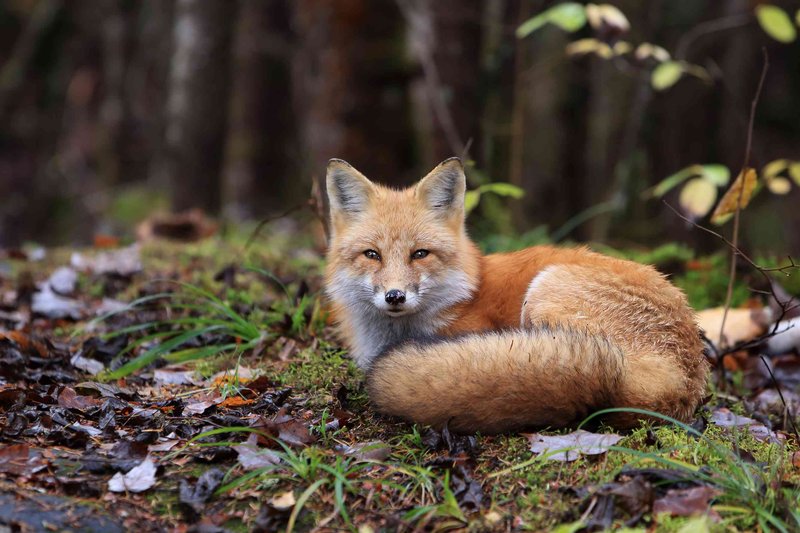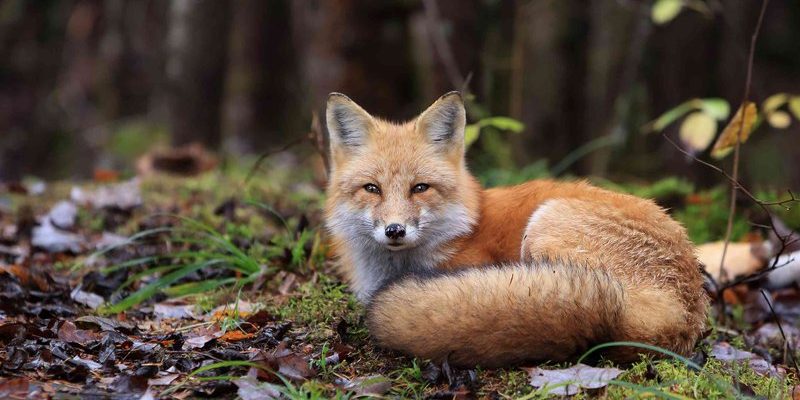
Honestly, red foxes are charming and adaptable, which might explain why they’ve gathered such a colorful reputation. From folklore to popular culture, their cunning nature has led to a variety of stories—some true, some not so much. Let’s explore these common myths, set the record straight, and discover what really makes red foxes tick.
Myth 1: Red Foxes Are Just Like Domestic Dogs
You might be surprised to learn that while red foxes and domestic dogs share a family lineage, they’re not exactly the same. Here’s the thing: red foxes have evolved to survive in the wild, and their behavior reflects that. Unlike our friendly pups, red foxes are wild animals with instincts that guide them in their natural habitat.
- Wild Behavior: Red foxes are more solitary and territorial than dogs. They often hunt alone and are very cautious around humans.
- Communication: They have a complex system of vocalizations, including barks, screams, and howls, which are quite different from the typical dog barks.
- Diet: Their diet is varied and can include small mammals, birds, fruits, and in some cases, insects. Domestic dogs, on the other hand, have a more restricted diet that humans provide.
So, while they might share characteristics, it’s essential to remember that red foxes and domestic dogs have diverged quite a bit along their evolutionary paths.
Myth 2: Red Foxes Are Only Found in Rural Areas
Many people imagine red foxes roaming the countryside, but they’re actually quite adaptable. You might be wondering how they manage this adaptability. Well, red foxes have made a name for themselves as urban survivors. That’s right!
In many cities, red foxes can be spotted in parks, backyards, and even at night prowling through suburban neighborhoods. They have learned to navigate human environments to find food and shelter.
- Urban Adaptation: Red foxes often scavenge for food in garbage cans and hunt small animals that thrive in urban areas.
- Habitat Diversity: They thrive in a variety of habitats, from forests to grasslands, and even deserts.
- Human Interaction: While they generally avoid humans, some have become accustomed to urban life, showing a level of comfort around people.
So, the next time you think about where a red fox might live, remember that they can be just as at home in the city as in the countryside.
Myth 3: Red Foxes Are Pests
It’s easy to label something as a pest if it disrupts our day-to-day lives. Some people see red foxes as nuisances, especially when they prey on backyard chickens or pets. However, here’s the thing: they play an essential role in the ecosystem.
Red foxes help maintain the balance of nature by controlling populations of smaller animals. Without them, there could be an overpopulation of rodents and other small creatures, which might lead to further issues.
- Ecosystem Role: They help keep small mammal populations in check, which in turn supports the health of the ecosystem.
- Natural Pest Control: By hunting rodents, red foxes naturally manage the pest population, benefiting farmers and gardeners.
- Less Harmful Than Believed: While they might eat chickens, they typically target the easiest prey available, often hunting in areas where food is abundant.
When we view red foxes through this lens, we can appreciate them as vital players in our environment rather than just pests.
Myth 4: All Red Foxes Are Red
The name might suggest that all red foxes are, well, red. But that’s not the full story! You might be surprised to know that red foxes come in various colors, including gray, black, and even silver.
- Color Variants: While the typical red fox has a reddish coat, some can have darker fur, especially in colder regions where their color may help with camouflage.
- Genetic Diversity: The variation in color is due to their genetic makeup, which can result in a range of hues and patterns.
- Regional Differences: Depending on the habitat and climate, the coloration can sometimes offer better survival strategies.
So, the next time you catch sight of a fox, take a moment to appreciate the rich diversity in their appearance!
Myth 5: Red Foxes Are Dangerous to Humans
When it comes to wildlife, fear often clouds our judgment. Many people worry that red foxes might pose a threat to humans. Let me explain: while these creatures are wild and capable of defending themselves, they are usually not a danger to people.
Most red foxes avoid human interaction and will flee if they detect humans nearby. They rely on their cunning and speed, preferring to keep their distance rather than confront anyone.
- Instincts: Like many wild animals, their instinct is to avoid confrontation. They do not naturally see humans as prey.
- Rabies Concerns: While rabies can affect foxes, the overall risk of a rabid red fox interacting with humans is low.
- Respectful Distance: Observing foxes from a distance is always the best practice. They are most often harmless as long as we don’t corner them.
Understanding their behavior can help ease fears and encourage coexistence.
Myth 6: Red Foxes Are Solitary Creatures
While red foxes are often depicted as lone hunters, they can actually form strong social bonds. You might find it interesting that they live in family groups, especially during parenting seasons.
During the breeding season, a pair of red foxes will mate for life, and they often raise their kits together.
- Family Units: A typical red fox family consists of a breeding pair and their young, who often help in caring for the kits.
- Social Interactions: They communicate through a range of vocalizations, body language, and scent marking, showing they have rich social lives.
- Territorial Behavior: While they hunt solo, they use their family groups to establish territory and protect their young.
So, while red foxes may display solitary hunting tactics, their family-oriented behavior reflects the importance of social structures within their lives.
Myth 7: All Red Foxes Are the Same Size
You may think of a red fox as a uniform size, but there’s actually quite a bit of variety! The size of a red fox can depend on its environment, food availability, and even its geographic location.
Typically, red foxes weigh between 8 to 15 pounds, but that can vary.
- Regional Differences: Foxes in colder climates may be larger and fluffier due to the need for insulation.
- Diet Influence: A well-fed fox may weigh more than one struggling to find food in a harsh environment.
- Sex Differences: Males tend to be larger than females, so you might see varying sizes even within the same environment.
This diversity in body size highlights the adaptability of red foxes in their respective habitats.
In conclusion, red foxes are more complex and fascinating than many of the myths suggest. They play crucial roles in our ecosystems and demonstrate incredible adaptability in both rural and urban environments. While they may be traditional symbols of cunning, it’s essential to appreciate and respect them as vital components of wildlife. The next time you see a red fox, take a moment to recognize the truth behind the myths and remember the unique traits that make them the remarkable animals they are.

